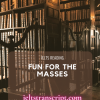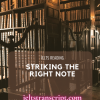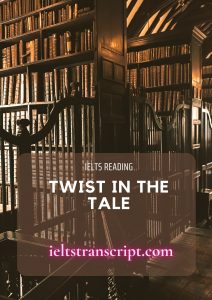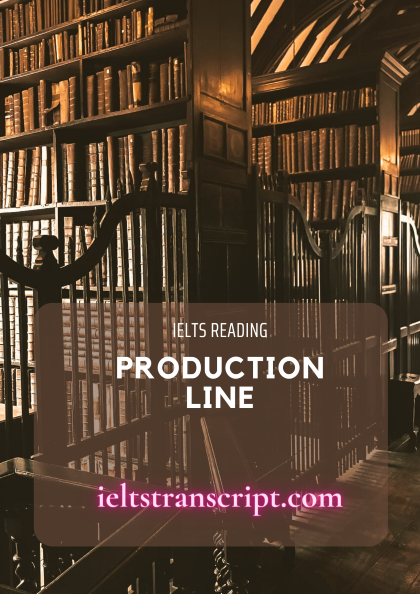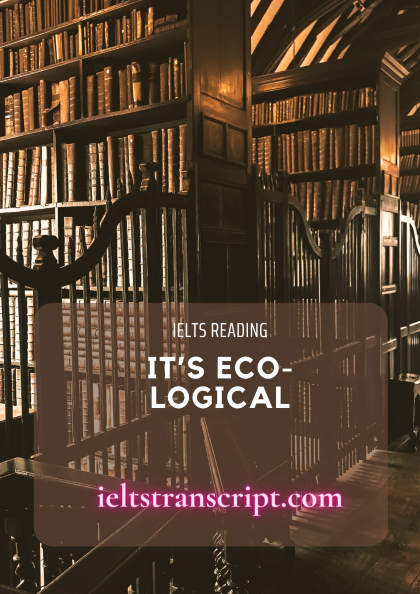- Đối với sản phẩm có giá: Sau khi chúng tôi ghi nhận thông tin đã thanh toán sản phẩm của bạn, sản phẩm sẽ được mở khóa và bạn có thể xem trực tiếp và tải tài liệu sản phẩm.
- Đối với thành viên trả phí: Bạn có thể mua và thanh toán sản phẩm với giá 0đ để tải tài liệu sản phẩm.
- Bạn có thể liên hệ với chúng tôi để được hỗ trợ mở khóa sản phẩm sớm nhất.
TWIST IN THE TALE
- Chúng tôi chấp nhận các phương thức thanh toán sau đây: Thẻ tín dụng, thẻ ghi nợ, PayPal, chuyển khoản ngân hàng và tiền mặt.
Chúng tôi sẽ không thu thêm phí cho bất kỳ hình thức thanh toán nào.
- Nếu bạn gặp vấn đề về sản phẩm của chúng tôi trong thời gian sử dụng, vui lòng liên hệ với chúng tôi để được hỗ trợ xử lý sớm nhất nhé.
Xem trước mẫu
Twist in the Tale
Fears that television and computers would kill children’s desire to read couldn’t have been more wrong. With sales roaring, a new generation of authors are publishing’s newest and unlikeliest literary stars
A Less than three years ago, doom merchants were predicting that the growth in video games and the rise of the Internet would sound the death knell for children’s literature. But contrary to popular myth, children are reading more books than ever. A recent survey by Books Marketing found that children up to the age of 11 read on average for four hours a week, particularly girls.
B Moreover, the children’s book market, which traditionally was seen as a poor cousin to the more lucrative and successful adult market, has come into its own. Publishing houses are now making considerable profits on the back of new children’s books and children’s authors can now command significant advances. ‘Children’s books are going through an incredibly fertile period,’ says Wendy Cooling, a children’s literature consultant. ‘There’s a real buzz around them. Book clubs are happening, sales are good, and people are much more willing to listen to children’s authors.’
C The main growth area has been the market for eight to fourteen-year-olds, and there is little doubt that the boom has been fuelled by the bespectacled apprentice, Harry Potter. So influential has J. K. Rowling’s series of books been that they have helped to make reading fashionable for pre-teens. ‘Harry made it OK to be seen on a bus reading a book,’ says Cooling. ‘To a child, that is important.’ The current buzz around the publication of the fourth Harry Potter beats anything in the world of adult literature.
D ‘People still tell me, “Children don’t read nowadays”,’ says David Almond, the award-winning author of children’s books such as Skellig. The truth is that they are skilled, creative readers. When 1 do classroom visits, they ask me very sophisticated questions about use of language, story structure, chapters and dialogue.’ No one is denying that books are competing with other forms of entertainment for children’s attention but it seems as though children find a special kind of mental nourishment within the printed page.
E ‘A few years ago, publishers lost confidence and wanted to make books more like television, the medium that frightened them most,’ says children’s book critic Julia Eccleshare. ‘But books aren’t TV, and you will find that children always say that the good thing about books is that you can see them in your head. Children are demanding readers,’ she says. ‘If they don’t get it in two pages, they’ll drop it.’
F No more are children’s authors considered mere sentimentalists or failed adult writers. ‘Some feted adult writers would kill for the sales,’ says Almond, who sold 42,392 copies of Skellig in 1999 alone. And advances seem to be growing too: UK publishing outfit Orion recently negotiated a six-figure sum from US company Scholastic for The Seeing Stone, a children’s novel by Kevin Crossley-Holland, the majority of which will go to the author.
G It helps that once smitten, children are loyal and even fanatical consumers. Author Jacqueline Wilson says that children spread news of her books like a bushfire. ‘My average reader is a girl of ten,’ she explains. ‘They’re sociable and acquisitive. They collect. They have parties – where books are a good present. If they like something, they have to pass it on.’ After Rowling, Wilson is currently the best-selling children’s writer, and her sales have boomed over the past three years. She has sold more than three million books, but remains virtually invisible to adults, although most ten- year-old girls know about her.
H Children’s books are surprisingly relevant to contemporary life. Provided they are handled with care, few topics are considered off-limits for children. One senses that children’s writers relish the chance to discuss the whole area of topics and language. But Anne Fine,
...Cái kết không thể ngờ tới
Việc lo sợ rằng tivi và máy tính sẽ giết chết ham muốn đọc của trẻ em thì không thể sai lầm hơn. Với doanh số bán hàng rầm rộ, một thế hệ tác giả mới đang xuất bản những tác phẩm văn học mới nhất và rất khác biệt
ACách đây chưa đầy ba năm, những người tiêu cực đã dự đoán rằng sự phát triển của trò chơi điện tử và sự trỗi dậy của Internet sẽ gióng lên hồi chuông báo tử cho văn học thiếu nhi. Nhưng trái với lầm tưởng phổ biến này, trẻ em đang đọc nhiều sách hơn bao giờ hết. Một cuộc khảo sát gần đây của Books Marketing cho thấy trẻ em dưới 11 tuổi đọc trung bình 4 giờ một tuần, đặc biệt là trẻ em gái.
BHơn nữa, thị trường sách dành cho trẻ em, thường được coi là kém cỏi hơn về khả năng sinh lời và thành công so với thị trường sách dành cho người lớn, thì nay đã đi vào hoạt động của riêng nó. Các nhà xuất bản hiện đang kiếm được lợi nhuận đáng kể nhờ những cuốn sách mới dành cho trẻ em và các tác giả dành cho trẻ em giờ đây có thể đạt được những thành tựu đáng kể. Wendy Cooling, một nhà tư vấn văn học cho trẻ em cho biết: ‘Sách dành cho trẻ em đang trải qua một thời kỳ vô cùng màu mỡ ‘. ‘Có một tiếng vang thực sự xung quanh chúng. Các câu lạc bộ sách đang diễn ra, doanh số bán hàng tốt và mọi người sẵn sàng lắng nghe các tác giả thiếu nhi hơn nhiều. ‘
CKhu vực tăng trưởng chính là thị trường dành cho trẻ từ tám đến mười bốn tuổi, và không còn nghi ngờ gì nữa rằng sự bùng nổ đã được thúc đẩy bởi cậu học trò đeo kính cận, Harry Potter. Loạt sách của JK Rowling có tầm ảnh hưởng lớn đến mức chúng đã giúp biến việc đọc sách trở thành xu hướng thời trang cho lứa tuổi thanh thiếu niên. Cooling nói: ‘Harry đã truyền cảm hứng khi được nhìn thấy trên xe buýt và đang đọc sách ‘. ‘Đối với một đứa trẻ, đó là điều quan trọng. ‘ Sự xôn xao hiện tại xung quanh việc xuất bản cuốn Harry Potter thứ tư đã đánh bại mọi thứ trong thế giới văn học dành cho người lớn.
D ‘Mọi người vẫn nói với tôi, “Trẻ em ngày nay không đọc”, ‘ David Almond, tác giả từng đoạt giải thưởng về sách dành cho trẻ em như Skellig cho biết. Sự thật là trẻ em là những người đọc có kỹ năng, sáng tạo. Khi tôi đến thăm lớp học, bọn trẻ hỏi tôi những câu hỏi rất phức tạp về cách sử dụng ngôn ngữ, cấu trúc câu chuyện, các chương và đối thoại. ‘ Không ai phủ nhận rằng sách đang cạnh tranh với các hình thức giải trí khác để thu hút sự chú ý của trẻ em nhưng dường như trẻ em đã tìm thấy một loại thức ăn nuôi dưỡng tinh thần đặc biệt nằm trong sách.
Nhà phê bình sách thiếu nhi Julia Eccleshare cho biết: “Vài năm trước, các nhà xuất bản đã đánh mất niềm tin và muốn làm cho sách giống tivi hơn, thứ phương tiện truyền thông khiến họ sợ hãi nhất”. ‘Nhưng sách không phải là TV, và bạn sẽ thấy rằng trẻ em luôn nói rằng điều hay nhất về sách là bạn có thể nhìn thấy chúng trong đầu. Trẻ em là những độc giả khá đòi hỏi, ‘cô nói. ‘Nếu bọn trẻ không thích nó trong hai trang, chúng sẽ bỏ nó.‘
FKhông còn những tác giả dành cho trẻ em bị coi là những người theo chủ nghĩa tình cảm đơn thuần hay những nhà văn người lớn thất bại. Almond, người đã bán được 42.392 bản Skellig chỉ trong năm 1999, cho biết: Những cải tiến dường như cũng đang phát triển: Công ty xuất bản Orion của Vương quốc Anh gần đây đã thương lượng một khoản tiền sáu con số từ công ty Scholastic của Mỹ cho The See Stone, một cuốn tiểu thuyết dành cho trẻ em của Kevin Crossley-Holland, phần lớn tiền trong số đó sẽ thuộc về tác giả.
GNó giúp trẻ em trở thành những người tiêu dùng trung thành và thậm chí cuồng tín. Tác giả Jacqueline Wilson nói rằng bọn trẻ lan truyền tin tức về những cuốn sách của bà như một đám cháy rừng. “Đọc giả trung bình của tôi là một cô gái mười tuổi,” cô giải thích. ‘Họ hòa đồng và nhạy bén. Họ tập trung. Họ có những bữa tiệc – nơi sách là một món quà có giá trị. Nếu họ thích quyển sách đó, họ sẽ giới thiệu nó. ‘ Sau Rowling, Wilson hiện là nhà văn thiếu nhi có sách bán chạy nhất, và doanh thu của cô đã tăng vọt trong ba năm qua. Cô đã bán được hơn ba triệu cuốn sách, nhưng hầu như
...Để xem được đầy đủ nội dung và tải dữ liệu, bạn phải trở thành thành viên của chúng tôi và trả phí cho tài liệu (nếu có)

